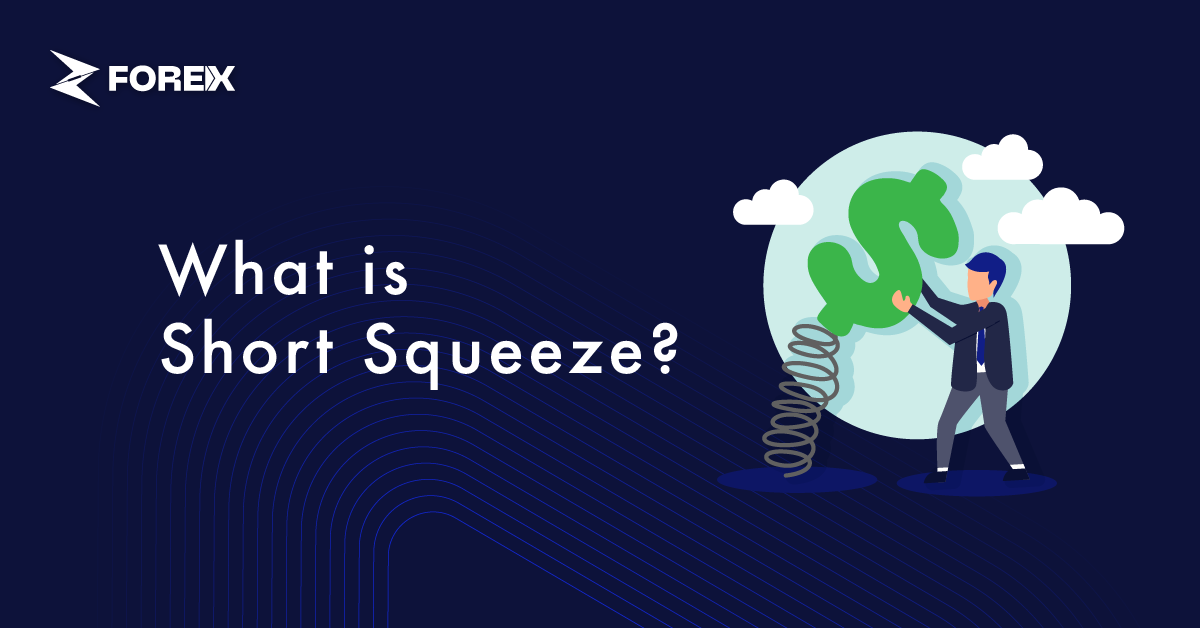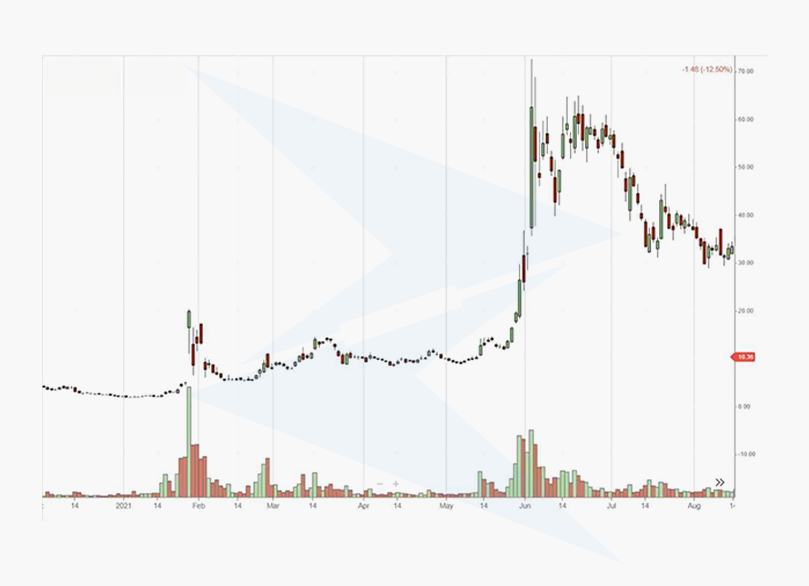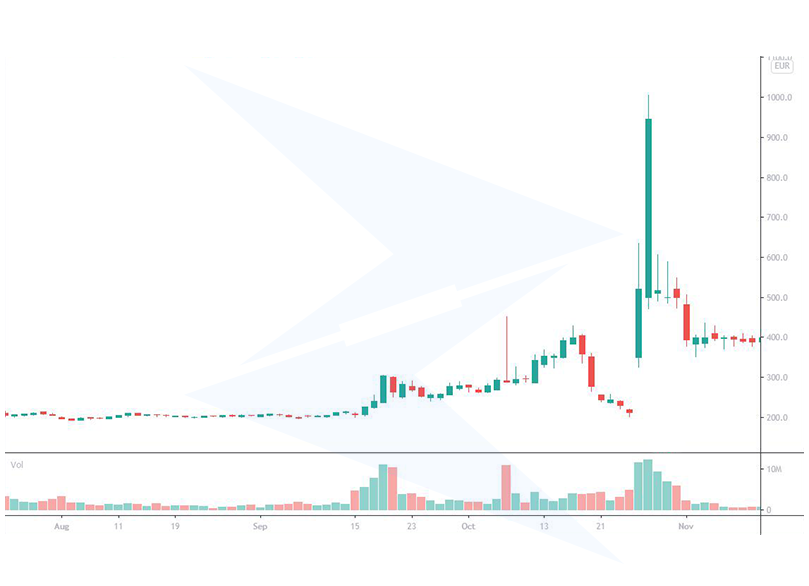
If a large number of short positions have been opened on an asset and the price of that asset suddenly begins to rise, a short squeeze occurs. In this situation, short position holders are forced to quickly close their positions to limit their losses, leading to increased demand and consequently driving the asset's price higher and higher.
A short squeeze is a situation or more likely a phenomenon in financial markets that can lead to both losses and gains. In this article, we will delve into how a short squeeze occurs and how investors can prepare for this situation in more detail.
A short squeeze occurs when the price of an asset with short positions rises rapidly. Investors who have taken short positions anticipate that the price will fall, but when prices unexpectedly start to rise, they face the risk of substantial losses.
In this situation, short sellers may be forced to buy back the asset to close their positions and limit their losses. This increases demand for the asset, which in turn drives prices even higher. As prices continue to rise, more short sellers may panic and close their positions, further pushing prices upward.
A short squeeze often arises unexpectedly and can lead to increased market volatility. It’s more common in small-cap markets or with assets that are susceptible to manipulation.

For example, if large trader groups intentionally buy up an asset to drive its price higher, it can beat short positions and push prices even further up, causing the short squeeze to intensify and lead to huge price movements.
While a short squeeze poses major risks to traders, it can also present opportunities. In such situations, investors who buy at the right time can potentially achieve substantial gains in a short period. However, these opportunities come with considerable risks.
One of the main reasons short squeezes occur is the high concentration of short positions in the market and these positions being based on an incorrect price movement forecast. Traders open short positions expecting the price of a particular asset to fall, but if the market moves against these expectations, investors face a huge risk of loss.
Such a situation is often triggered by unexpected market news, surprising economic data, or a company reporting better-than-expected financial results. Positive developments increase demand for the asset, driving prices higher. Short position holders, facing rapidly rising prices, are forced to close their positions to limit their losses, which triggers the beginning of a short squeeze.
Additionally, short squeezes can be initiated by individual traders organizing through social media and forums to collectively buy a particular asset with the aim of squeezing the short positions. This is especially common in low-volume markets or in assets with a large buildup of short positions.
Another reason for a short squeeze is market manipulation. Large investors or funds may deliberately make purchases of a particular asset to drive up prices and squeeze short positions in order to make a profit. Manipulative moves can cause market volatility and amplify the intensity of a short squeeze.
The short squeeze that occurred with GameStop (GME) shares in 2021 made significant waves in the financial world. In this event, many investors had heavily shorted GameStop shares, predicting that their value would drop. However, individual investors, organized through social media platforms like Reddit, began to collectively purchase these shares, rapidly driving up their prices.

As prices unexpectedly surged, short sellers faced substantial losses. To limit their losses, traders were forced to close their short positions, leading to even more buying and further driving up the stock's price. During this process, GameStop shares saw an incredible increase in value, causing huge losses for those holding short positions. This event also demonstrated how small, organized investors could challenge large market players.
Another famous example of a short squeeze occurred in 2008 with Volkswagen shares. At that time, many investors had heavily shorted Volkswagen shares, anticipating a decline in value, especially after Porsche announced its plans to take control of Volkswagen.

However, when news leaked that Porsche had acquired a significant portion of Volkswagen shares, the situation completely reversed. With Porsche holding a large share of the stock, combined with shares held by the German state government, there were very few shares left available for trading on the market.
This led short sellers to scramble to buy back shares to cover their positions. The scarcity of shares and the high demand caused Volkswagen's stock price to soar rapidly. Within a few days, the share price quadrupled, temporarily making Volkswagen the most valuable company in the world.
Short selling refers to the practice of traders opening short positions on an asset, anticipating that its value will decline. The strategy involves borrowing and selling the asset with the intention of buying it back at a lower price. However, it can backfire due to unexpected market movements, leading to a situation known as a short squeeze.
A short squeeze occurs when short sellers are forced to close their positions. If the market price unexpectedly rises, investors who have opened short positions may need to quickly buy back the asset to limit their losses. This increased demand can further drive up the price, exacerbating the situation.
How to identify a short squeeze?
To identify a short squeeze, it is important to check whether a security has a high short interest. Additionally, indicators like "days to cover" (the number of days it would take to cover all short positions based on average trading volume) can be analyzed. Unexpected positive news or economic developments can also trigger a short squeeze, so it’s important to monitor sudden price spikes in the market.
Who loses and who benefits from a short squeeze?
The losers in a short squeeze are typically the investors who have opened short positions, as they may suffer big losses when prices unexpectedly rise. The winners are usually those who bought the asset at a lower price and sell when the price increases. Additionally, groups of investors or funds that initiate a short squeeze can also benefit from the situation.
What are days to cover, and is it useful for identifying short squeeze targets?
Days to cover is a metric that indicates how many days it would take to close all short positions in a security based on its average trading volume. A high days to cover ratio suggests that if short sellers rush to close their positions, there may not be enough liquidity, making it a potential target for a short squeeze.
How can traders prepare for a short squeeze?
To prepare for a short squeeze, traders should monitor securities with high short interest and stay informed about unexpected news or market developments. It’s also important to carefully manage margin levels, use stop-loss orders, and be cautious of market volatility. Developing a sound strategy to minimize risks when opening short positions is essential.
What are the differences between market manipulation and a short squeeze?
Market manipulation involves deliberate actions to artificially influence the price of a security or spread false information. A short squeeze, on the other hand, results from natural market dynamics, often involving securities with high short interest that experience sudden price increases. While manipulation is intentional, a short squeeze typically occurs due to supply and demand imbalances in the market.
How does a short squeeze increase market volatility?
During a short squeeze, short sellers rush to close their positions by buying back the security, increasing market liquidity and causing prices to rise rapidly. These sudden price movements heighten market volatility, leading to larger-than-normal price fluctuations.
Which indicators should be watched during a short squeeze?
Indicators to watch during a short squeeze include short interest, days to cover, RSI (Relative Strength Index), and volatility indicators. It’s also important to pay attention to the speed of price movements and overall market sentiment.
How do short squeezes affect long-term investors?
Short squeezes are typically short-term events, so long-term investors are generally not directly affected. However, the price volatility following a short squeeze can cause temporary fluctuations in the value of a long-term portfolio. Long-term investors might view these movements as short-term profit opportunities or consider adjusting their investment strategies accordingly.
What are the most common mistakes related to a short squeeze?
Common mistakes related to a short squeeze include incorrectly predicting market direction and taking on excessive short positions. Failing to manage risk, ignoring margin levels, and not using stop-loss orders are also frequent errors. Additionally, not paying enough attention to market news and ignoring the potential for a short squeeze are other major mistakes.
 Precious Metals Ratios Against Gold
Precious Metals Ratios Against Gold
Learn what precious metals ratios mean. See what gold-silver, gold-platinum, gold-palladium, and gold-copper ratios tell traders.
Detail How to Share Access to a cTrader Account
How to Share Access to a cTrader Account
Learn how to share access to another cTrader account with a step-by-step guide for web, desktop, and the cTrader mobile app.
Detail How to Use Risk-Reward Tool in cTrader
How to Use Risk-Reward Tool in cTrader
What is the Risk-Reward tool in cTrader and how to use it. Learn with practical examples.
DetailThen Join Our Telegram Channel and Subscribe Our Trading Signals Newsletter for Free!
Join Us On Telegram!